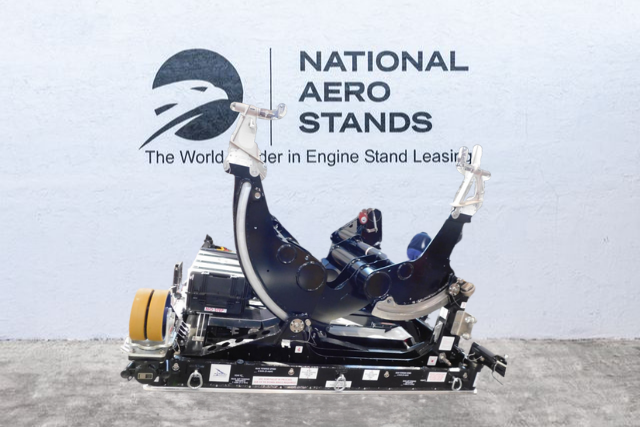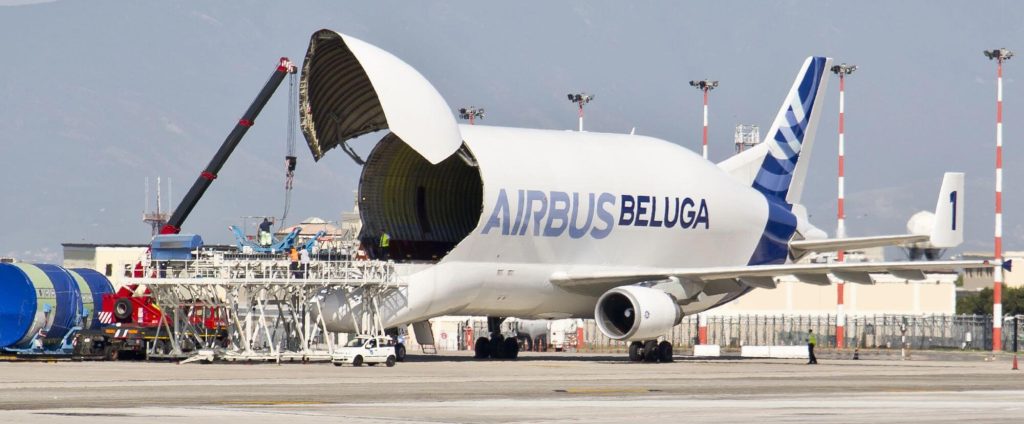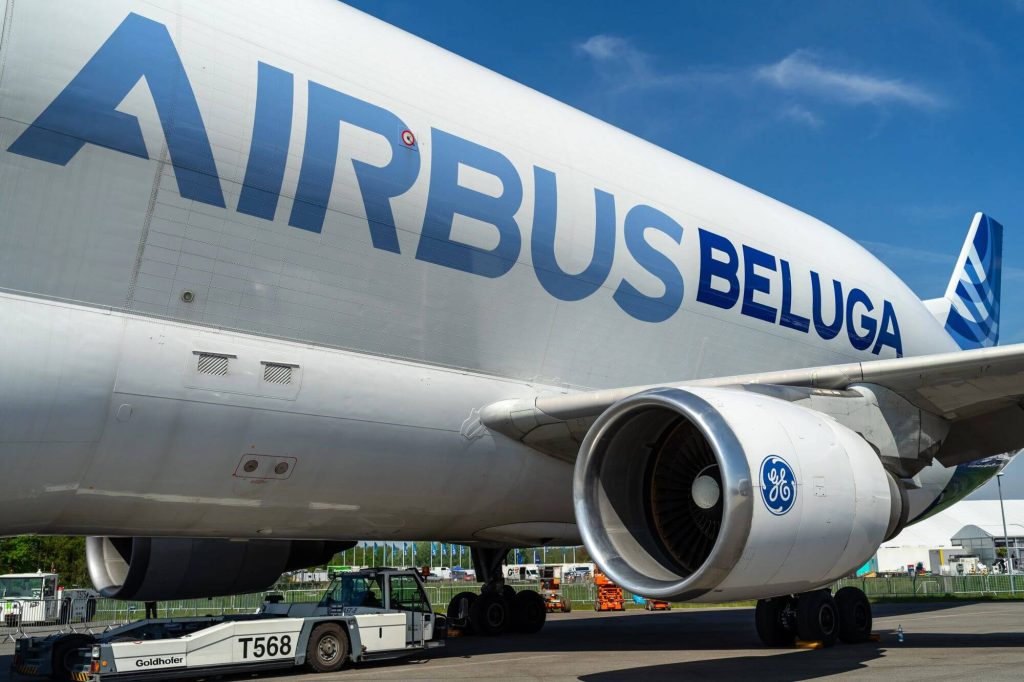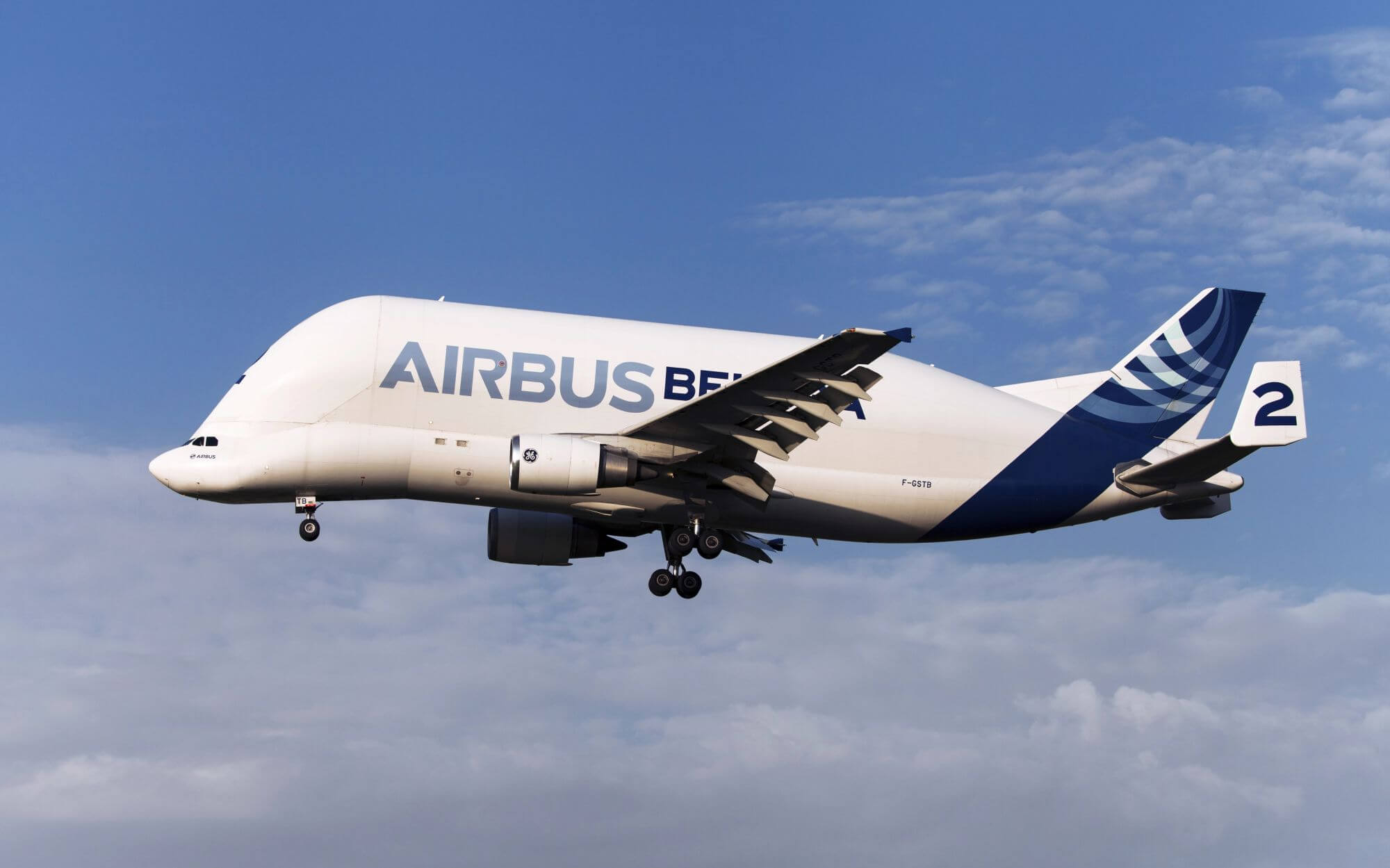Step aboard the remarkable world of aviation engineering with the Airbus Beluga, a transport aircraft that has redefined the possibilities of cargo transportation. This extraordinary aircraft, with its whale-like appearance, represents a pinnacle of innovative design and practical engineering that continues to shape the future of aviation logistics.
The Airbus Beluga, introduced in September 1995, stands as a testament to aviation engineering excellence. This remarkable aircraft, officially designated as the A300-600ST (Super Transporter), features a distinctive bulbous design that sets it apart from conventional aircraft. Its expansive cargo hold enables the transport of exceptionally large items with unprecedented efficiency.
Trent 1000/7000 APS Engine Stand for Airbus Beluga

Discover the reliable Trent 1000/7000 APS Engine Stand by National Aero Stands, designed for secure transportation and storage of engines.
The Beluga serves dual purposes in modern aviation:
- Primary transportation of oversized aircraft components between Airbus production facilities
- Versatile cargo carrier for various industries requiring specialized transport solutions
- Essential tool in streamlining global logistics operations
- Key facilitator in international aerospace manufacturing
- Strategic asset for specialized commercial transport needs
What Makes the Airbus Beluga Unique?
The Beluga’s extraordinary design mirrors its marine namesake, the beluga whale, but this resemblance serves a crucial functional purpose. The aircraft’s most distinctive features include:
- Innovative hinged nose cone for efficient front-loading operations
- Strategically positioned cockpit below the cargo floor
- Cavernous cargo bay for exceptional payload capacity
- Optimized aerodynamic design despite its unusual shape
- Specialized loading systems for oversized cargo

The Role of the Airbus Beluga in Aviation
In modern aviation logistics, the Beluga has become indispensable. Through Airbus Beluga Transport operations, it serves multiple sectors:
- Aircraft manufacturing – transporting wings, fuselage sections, and major components
- Space industry – moving satellites and specialized equipment
- Industrial machinery – facilitating transport of oversized equipment
- Commercial cargo – serving specialized transport needs across industries
- International logistics – bridging manufacturing sites across Europe
History and Development of the Airbus Beluga
Born from the necessity to enhance Airbus’s logistics capabilities in the mid-1990s, the Beluga emerged as a revolutionary solution. Based on the A300-600 wide-body passenger jet, this unique aircraft has evolved from an internal logistics tool to a versatile commercial transport solution, particularly following the introduction of the larger A330-700L BelugaXL.
Origins and Evolution
The Beluga’s development story reflects Airbus’s commitment to innovation and efficiency. The aircraft’s evolution has been marked by continuous improvements and adaptations to meet growing industry demands, culminating in the strategic launch of Airbus Beluga Transport to serve third-party markets.
Key Milestones in the Beluga’s Journey
| Year | Achievement |
|---|---|
| 1995 | Initial entry into service |
| Recent years | Completion of BelugaXL fleet deliveries |
| Latest development | US operations approval obtained |
Design and Specifications of the Airbus Beluga
The Beluga’s design represents a masterful blend of form and function. Its distinctive whale-like silhouette houses a carefully engineered cargo bay capable of transporting entire aircraft sections, satellites, and large industrial components. This modified A300-600 platform demonstrates how innovative design can transform a passenger aircraft into an unparalleled cargo transport solution.
Technical Specifications
| Specification | Measurement |
|---|---|
| Length | 56.15 meters (184 feet 3 inches) |
| Wingspan | 44.84 meters (147 feet 1 inch) |
| Height | 17.24 meters (56 feet 7 inches) |
| Maximum Payload | 47 tonnes (103,616 pounds) |
| Range | 1,665 kilometers (900 nautical miles) |
| Cruising Speed | 780 km/h (420 knots) |
| Cruising Altitude | 31,000 feet |
The aircraft is powered by two General Electric CF6-80C2A8 engines, each delivering 257 kN (57,900 lbf) of thrust, making it remarkably efficient for its size and purpose.
Innovative Design Features
- Hinged Nose Cone – swings upward to enable efficient front-loading of cargo, significantly reducing turnaround times
- Lowered Cockpit – positioned below the cargo floor to maximize freight space while maintaining optimal flight characteristics
- Specialized Lower Fuselage – designed to support the expanded upper fuselage
- Enhanced Tail Section – engineered to ensure structural integrity and aerodynamic efficiency
Operational Capabilities and Fleet
The Airbus Beluga fleet demonstrates remarkable operational efficiency, with the BelugaST fleet operating at maximum capacity since 2017. The fleet maintains an intensive schedule of:
- Five daily flights
- Six-day work week
- 10,000 annual flight hours
- Enhanced capacity with sixth Beluga XL addition in June 2019

Current Fleet and Operations
The fleet comprises two distinct aircraft types: the original BelugaST and the newer BelugaXL. A significant development occurred in January 2022 with the launch of Airbus Beluga Transport (AiBT), operated by Airbus Transport International (ATI). The operation achieved a major milestone in January 2024 by securing its air operator certificate (AOC), enabling commercial cargo transport services with BelugaST freighters.
Global Impact and Usage
The Beluga fleet has revolutionized global logistics, particularly in aerospace transportation. The launch of Airbus Beluga Transport has expanded its capabilities to serve diverse sectors, including:
- Space satellite transportation
- Industrial machinery movement
- Specialized cargo solutions
- International trade facilitation
- Support for industries requiring oversized transport
The Future of the Airbus Beluga
While long-term plans for the BelugaST fleet remain under development, the establishment of Airbus Beluga Transport in January 2022 marks a strategic expansion into commercial markets. This evolution positions the aircraft to serve diverse industry needs while maintaining its crucial role in aerospace logistics.
Trent 1000/7000 APS Engine Stand for Airbus Beluga

Discover the reliable Trent 1000/7000 APS Engine Stand by National Aero Stands, designed for secure transportation and storage of engines.
Upcoming Developments and Innovations
The future of the Airbus Beluga promises continued innovation and expansion. Key developments include:
- New outsize cargo transportation services launched in January 2022
- Potential enhancements to cargo capacity
- Focus on improved fuel efficiency
- Integration of advanced materials and technologies
- Expanded applications across various industries
Challenges and Opportunities Ahead
The future of the Airbus Beluga presents a complex landscape of challenges and opportunities. The aircraft’s highly specialized nature creates specific market considerations that need careful navigation.Key Challenges:
- Finding consistent demand beyond Airbus’s internal operations
- Securing regular contracts for oversized cargo transport
- Adapting to evolving market demands
- Managing operational costs for specialized transport
- Maintaining competitive advantage in niche markets
Market Opportunities:
- Limited competition in high-capacity oversized cargo transport
- Growing demand from satellite manufacturing industry
- Expanding renewable energy sector requiring transport of large components
- Specialized art logistics for oversized sculptures
- Increasing complexity of global supply chains
The Airbus Beluga’s unique design and impressive payload capacity position it favorably to redefine logistics for oversized cargo. As global trade and industrial development continue to evolve, the aircraft’s specialized capabilities could play an increasingly crucial role in meeting complex transportation needs across various sectors.

